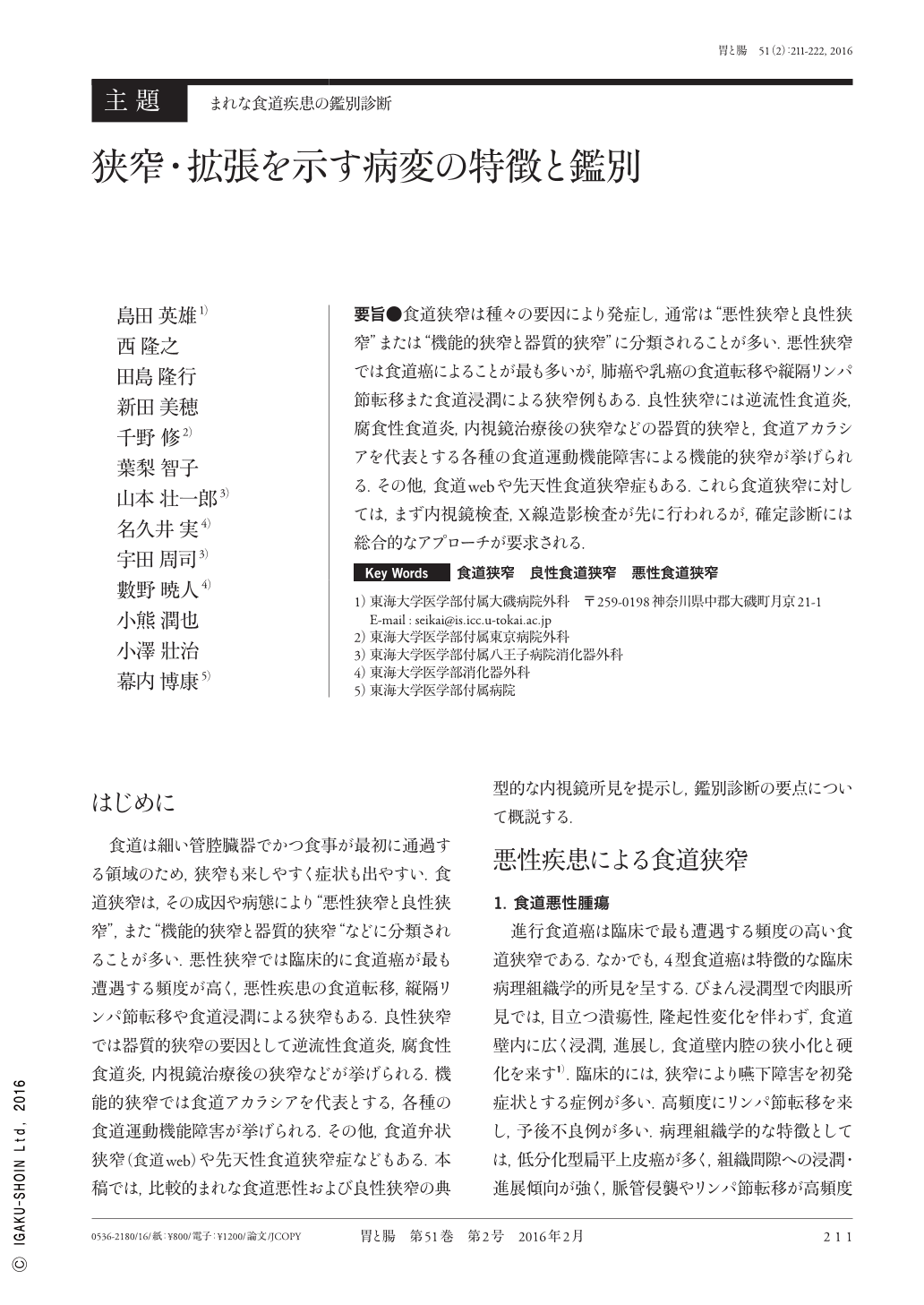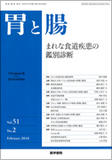Japanese
English
- 有料閲覧
- Abstract 文献概要
- 1ページ目 Look Inside
- 参考文献 Reference
- サイト内被引用 Cited by
要旨●食道狭窄は種々の要因により発症し,通常は“悪性狭窄と良性狭窄”または“機能的狭窄と器質的狭窄”に分類されることが多い.悪性狭窄では食道癌によることが最も多いが,肺癌や乳癌の食道転移や縦隔リンパ節転移また食道浸潤による狭窄例もある.良性狭窄には逆流性食道炎,腐食性食道炎,内視鏡治療後の狭窄などの器質的狭窄と,食道アカラシアを代表とする各種の食道運動機能障害による機能的狭窄が挙げられる.その他,食道webや先天性食道狭窄症もある.これら食道狭窄に対しては,まず内視鏡検査,X線造影検査が先に行われるが,確定診断には総合的なアプローチが要求される.
Esophageal stenosis may develop because of various causes, and cases of stenosis are normally subdivided into “malignant” and “benign” types or into “functional” or “fixed” stenosis. Malignant stenosis cases are most often caused by esophageal cancer, but are occasionally caused by metastasis of lung or breast cancer to the esophagus or metastasis to mediastinal lymph nodes. Furthermore, there are cases of stenosis caused by esophageal invasion. Fixed stenosis is a type of benign stenosis caused by reflux esophagitis, corrosive esophagitis, and postoperative scar tissue following methods such as endoscopy. There are various functional stenoses caused by functional disorders of the esophagus, as most prominently exemplified by esophagus achalasia ; furthermore, esophageal webs and congenital esophageal stenoses have been observed. Endoscopy and contrast imaging are generally used to observe esophageal stenosis ; however, a conclusive diagnosis can only be established through a comprehensive approach.

Copyright © 2016, Igaku-Shoin Ltd. All rights reserved.


